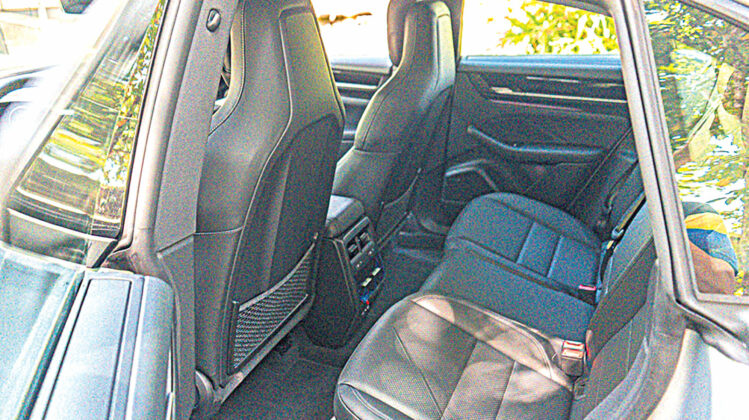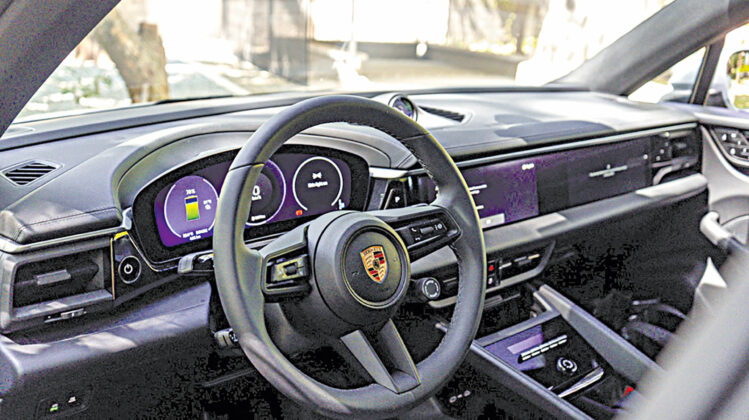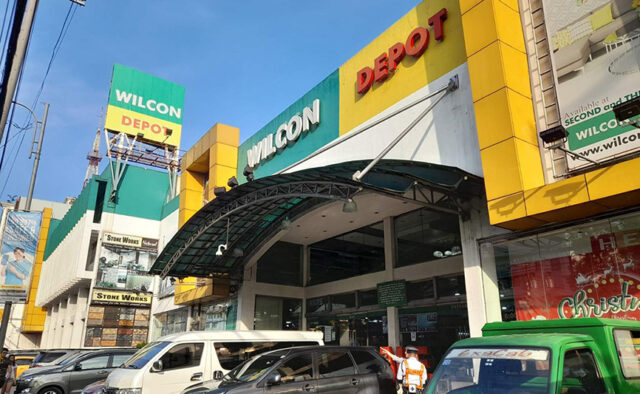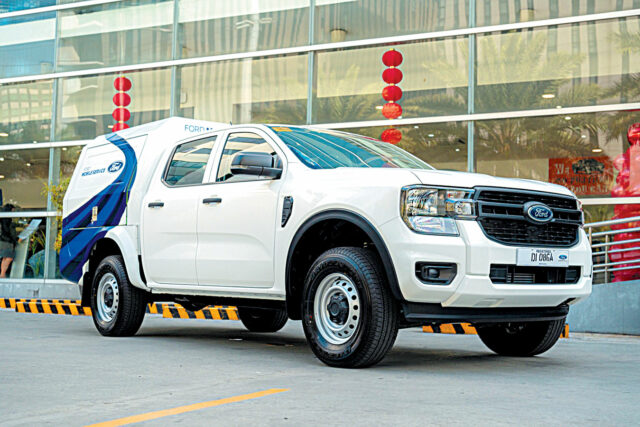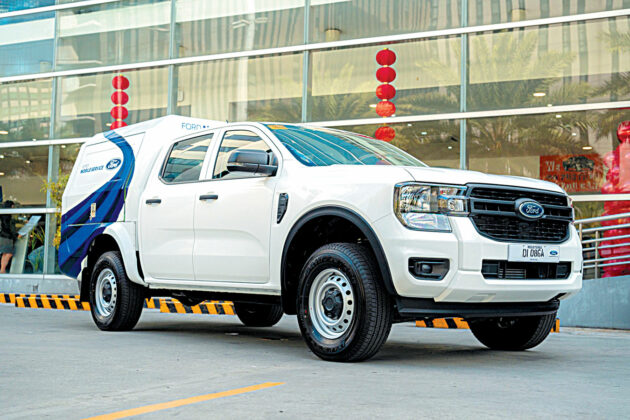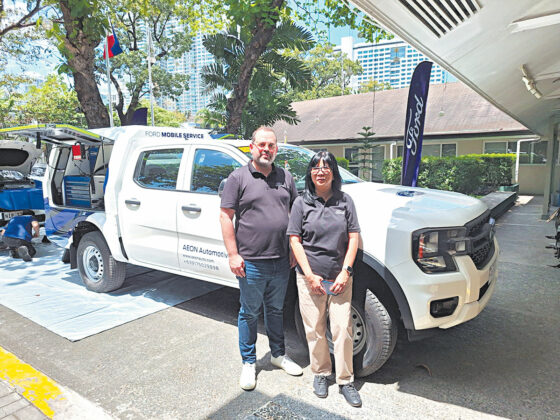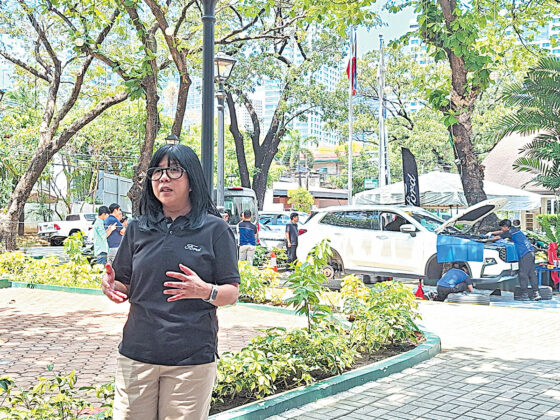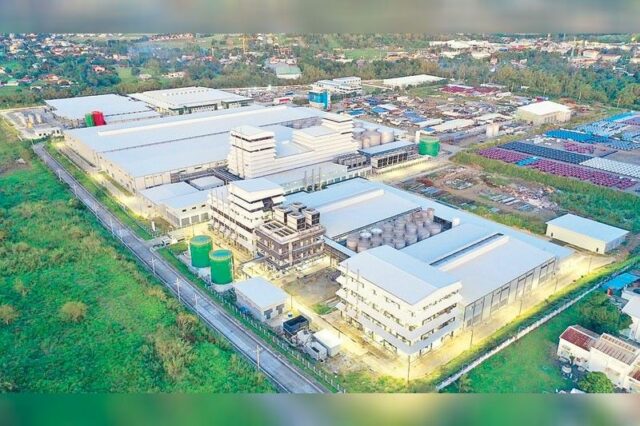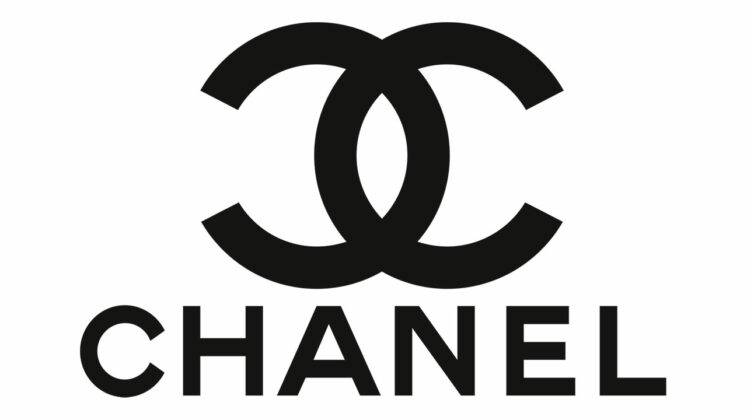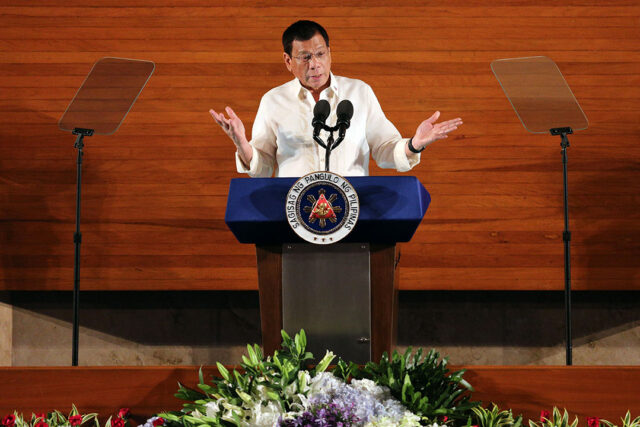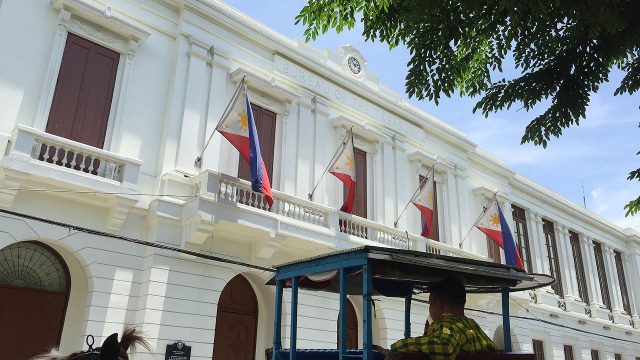Macan-bracadabra
Porsche’s smallest crossover weaves all-electric magic
IN CASE you weren’t paying attention, the Porsche Macan’s latest iteration (or second generation, first revealed globally in January 2024) has shed its internal combustion engine (ICE) for — in the case of the Macan 4 — two electric motors, one on each axle. A bit of news though before we commence with this piece: We asked Porsche Philippines and learned that the ICE version is still on sale, while supplies last.
That out of the way, a small group of media practitioners went on a southward drive recently aboard four units of the Porsche Macan 4, taking turns as we took a long, twisty, and undulating 83-kilometer route to scenic Escala Tagaytay. Of particular note is the winding spine of the Talisay-Tanauan Road.
The Macans glinted in the morning sunlight, all charged up and waiting for our group to board them in front of the Porsche Greenhills showroom. There was no need for a recharge, we were told. The vehicle’s range would not even be challenged. That figure, in case you’re wondering, is a WLTP-certified 613 kilometers.
I was assigned to a Dolomite Silver unit with fellow motoring scribe Alvin Uy. We noticed how refined the electric Macan drives — helped in no small way by the absence of an ICE. If you do miss the howl of a revving engine, engage the Macan’s Porsche Electric Sport Sound system for a commensurate sporty hum when you get heavy on the “throttle.”
The Macan 4’s aforementioned electric mills — called permanent magnet synchronous motors or PSM — deliver a stout 408hp and 650Nm of torque for such a compact vehicle. This translates into sprightly performance that allows a standstill-to-100kph time of 5.2 seconds. The PSM, said Porsche, consistently produces the same power “every time the throttle is applied.” Meanwhile, the vehicle’s low center of gravity and Porsche Active Suspension Management (PASM) leads to “outstanding driving dynamics, responsive and direct steering feel, and a ride quality offering a wide spectrum between comfort and performance.” What this means is that the Macan remains every inch a Porsche — earning the hallowed badge of the Stuttgart brand owing to its myriad of on-road talents.
It makes short work of winding roads even when (safely) taken at speed. Even on less-than-pristine terrain, the PASM’s shock absorbers deliver outstanding performance with two-valve technology that can be tailored for feel or comfort through rebound and compression level. The Macan also has an air suspension system, allowing the vehicle to be lowered by as much as 30 millimeters below its 185-mm standard ride height or elevated to a maximum of 225mm.
Inside, the Macan banners a highly digital affair through its display and control system, while still retaining some analog elements — more notably the tasty chrono on the dash. While the time is displayed digitally, the second hand is a physical one.
Collectively called the Porsche Driver Experience, the system tucks in a 12.6-inch curved display (instrument cluster), 10.9-inch central display (central infotainment screen), and a 10.9-inch passenger display. The content on the instrument cluster is highly customizable through the steering wheel controls.
The high-resolution central display, on the other hand, is exceptionally legible and doesn’t entail too steep of a learning curve. For the first time on the Macan, the other front seat is afforded an aforementioned passenger display, so he/she can be in charge of stuff like choosing the music or manning the navigation without distracting the driver or getting in his/her periphery.
The new-generation infotainment system is based on Android Automotive OS, and the Macan 4 features Porsche Communication Management (PCM) with the intelligent Voice Pilot function for voice commands and such. A so-called communication light stretches from one door panel to the other — helping the driver visualize, among other things, charging status. “It also works with select driver assistance systems, such as Lane Change Assist and Exit Warning, and can provide location-based warnings. For example, a pulsating signal of light in the door indicates danger to the driver if the door is opened when a cyclist is approaching from behind,” reported Porsche Philippines.
While it is a compact crossover, cabin space is decent — even for rear-seat occupants. I can report that I dozed off most peacefully while Alvin (and journalist William Herrera) were engaged in banter up front. I had A/C controls (and vents) for myself.
With regard to its electric nature, the Macan showcases 800-volt tech which, said Porsche, leads to quick charging times. When plugged into a 270-kW DC charger, the battery also reportedly “sprints” a la Porsche performance — from 10% to 80% in a scant 21 minutes. A more manageable (and battery-friendly) AC charging of 11kW yields an empty-to-full-battery time of about 10 hours. Charging of its 100-kWh lithium ion battery can be done on either side if you’re using alternating current; the DC port is on the left. The port doors are electrically retracted and closed via a touch gesture — or remotely through the PCM.
The high-voltage battery, which is situated low in the vehicle for improved center of gravity, is protected by a “lightweight but tough glass fiber composite underbody guard” versus physical damage. Additionally, “a cooling plate is integrated into the battery housing. Twelve modules, each with 15 prismatic cells connected in series, are mounted to it.”
When we got down from Tagaytay back to the Porsche Greenhills showroom — through monstrous traffic on EDSA (all the while never turning off the A/C) the Macan still had plenty of charge left — 54% after logging more than 200 kilometers — which is more than I can say for us old motoring scribes.






